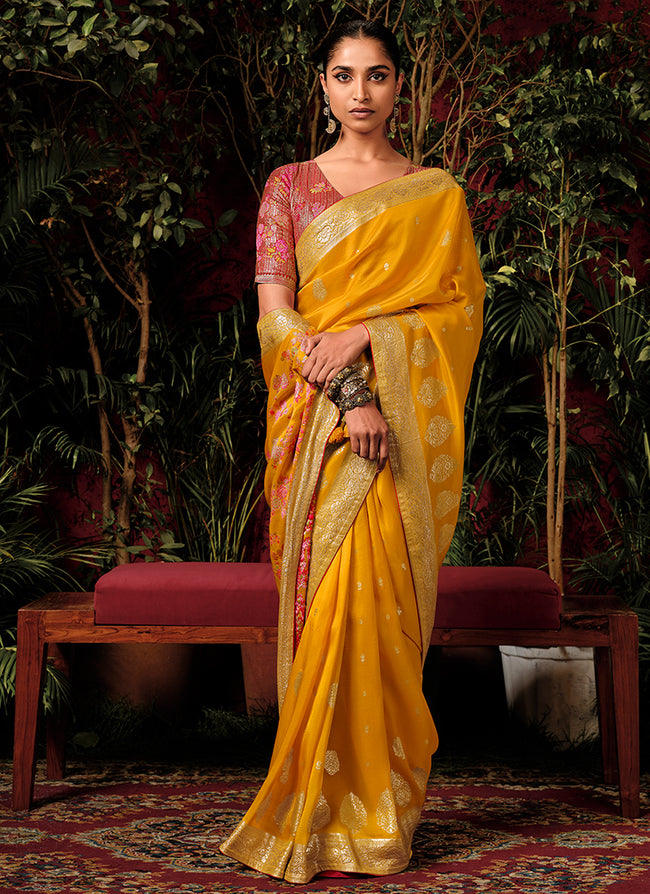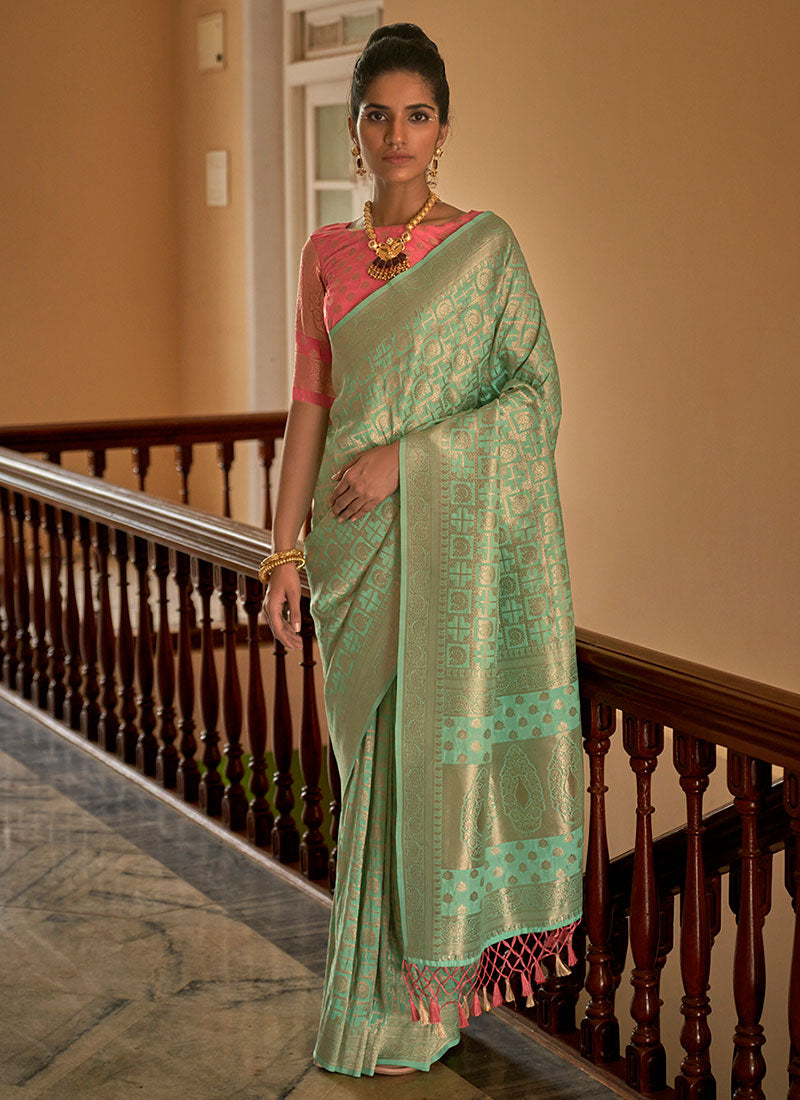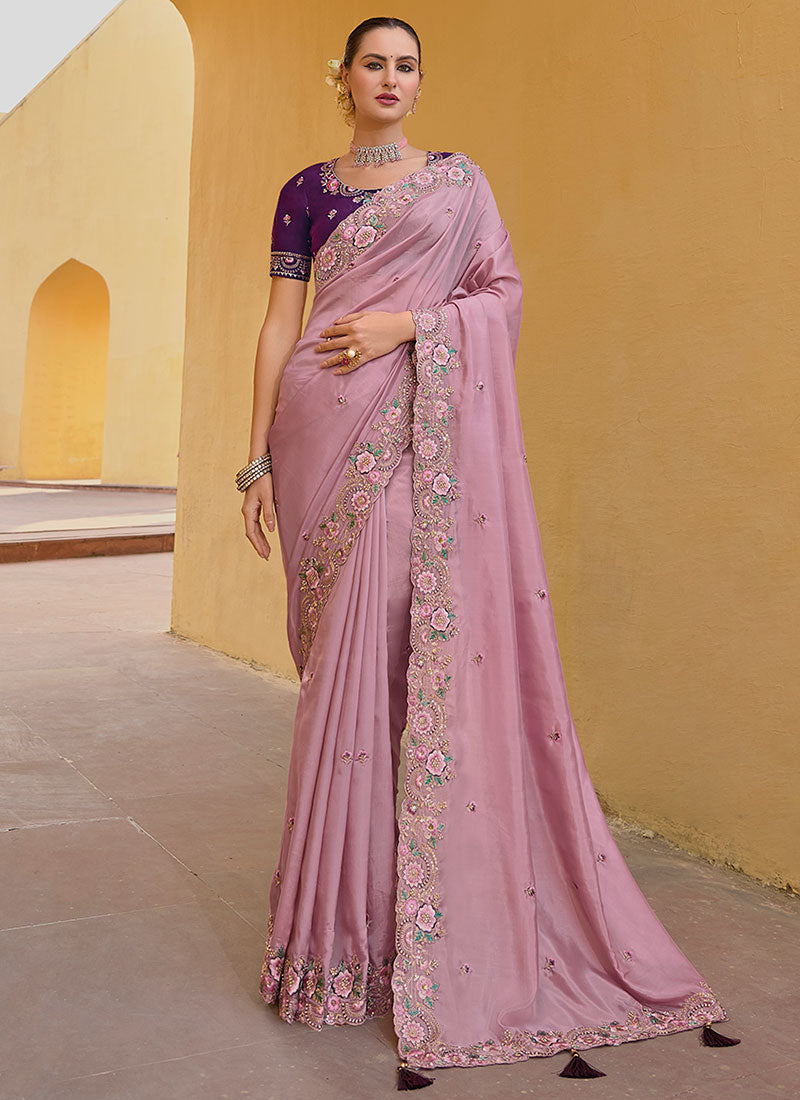In the world of traditional fashion, few garments embody the grace and sophistication of the silk saree. With a history that stretches back thousands of years, this timeless piece of clothing is more than just fabric; it is a symbol of cultural heritage and an embodiment of artisanal craftsmanship. From its rich textures to its intricate designs, the silk saree is a testament to the artistry and elegance of Indian textiles.
A Tapestry of Tradition
The origins of the silk saree can be traced to ancient India, where it was worn by royalty and nobility. This luxurious garment is made from silk, a fabric known for its smooth texture and sheen. The tradition of weaving silk sarees is deeply rooted in Indian culture, with different regions of the country contributing their unique styles and techniques to the saree’s rich heritage.
1. Varieties of Silk Sarees
India is renowned for its diverse range of silk sarees, each reflecting the unique cultural and artistic traditions of its region. Here are a few notable types:
-
Kanjivaram Sarees: Originating from Tamil Nadu, Kanjivaram sarees are celebrated for their rich silk and elaborate designs. The sarees are known for their heavy zari work and vibrant colors, often used for weddings and special occasions.
-
Banarasi Sarees: Hailing from Varanasi, these sarees are famous for their intricate brocade work and luxurious feel. The use of gold and silver threads in the design makes Banarasi sarees a popular choice for festive and ceremonial events.
-
Mysore Silk Sarees: Produced in Mysore, Karnataka, these sarees are known for their fine silk and subtle, elegant designs. Mysore silk sarees are often chosen for their understated sophistication and comfort.
-
Chanderi Sarees: From Madhya Pradesh, Chanderi sarees are lightweight and known for their sheer texture and elaborate patterns. These sarees blend traditional and contemporary styles, making them suitable for both casual and formal occasions.
The Art of Weaving
The creation of a silk saree is a meticulous process that involves several stages, from spinning the silk threads to weaving the final garment. The process often begins with the cultivation of silkworms, which produce the silk threads used in the saree. Skilled weavers then spin these threads into a fine yarn, which is dyed and woven into the fabric.
Traditional weaving techniques are passed down through generations, ensuring that the artistry of silk sarees is preserved. Each saree tells a story through its design, often featuring motifs that are symbolic of various cultural themes, such as nature, mythology, or religious symbols.
Elegance in Every Fold
What sets the silk saree apart is its inherent elegance and versatility. The fabric drapes beautifully, enhancing the wearer’s silhouette and adding a touch of refinement. Whether adorned with intricate embroidery or left with a minimalist design, a silk saree always manages to capture attention and convey a sense of grace.
1. Occasions and Styling
Silk sarees are incredibly versatile, making them suitable for a wide range of occasions. For weddings, elaborate sarees with rich zari work and bold colors are often chosen, while simpler, more understated designs are favored for formal events and gatherings.
Styling a silk saree can also vary depending on personal preference and occasion. Traditional draping styles, such as the Nivi drape or the Bengali drape, offer different looks and can be paired with various blouses to complement the saree’s design. Accessories like statement jewelry and elegant footwear further enhance the overall appearance, making the silk saree a complete ensemble.
Preserving a Legacy
In an era where fashion trends are constantly evolving, the silk saree stands as a beacon of timeless elegance. Its enduring appeal is a testament to the skill of the weavers and the cultural significance of the garment. To truly appreciate a silk saree is to acknowledge not only its aesthetic beauty but also the rich tradition and heritage it represents.
As we continue to celebrate and embrace traditional garments like the silk saree, we preserve a piece of history and honor the artisans who bring these beautiful creations to life. The silk saree remains a cherished part of Indian culture, symbolizing grace, sophistication, and the enduring charm of tradition.













